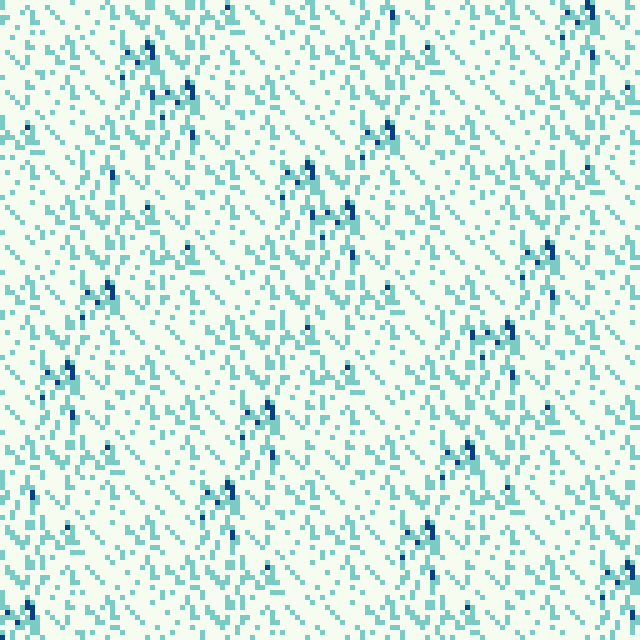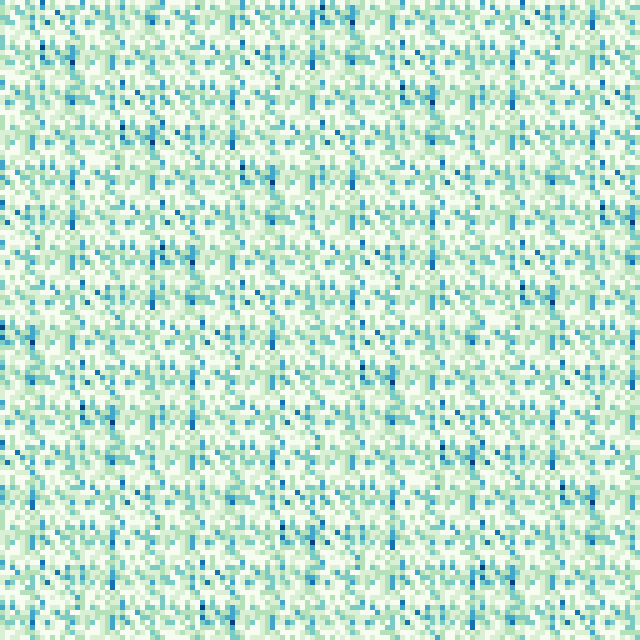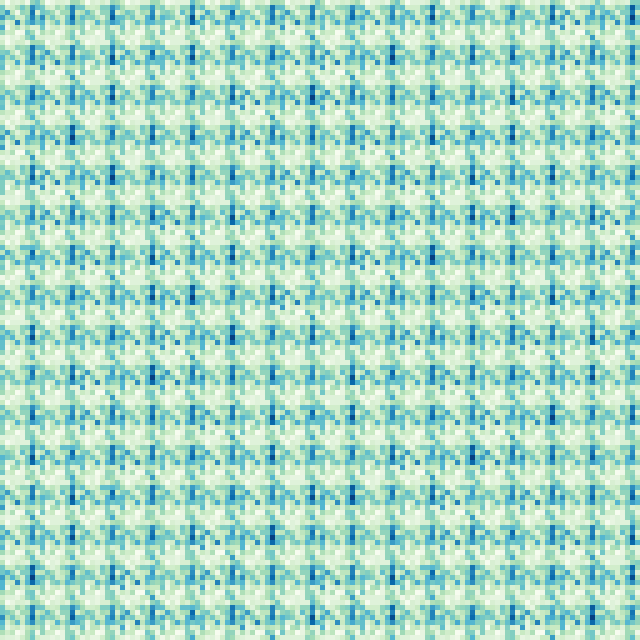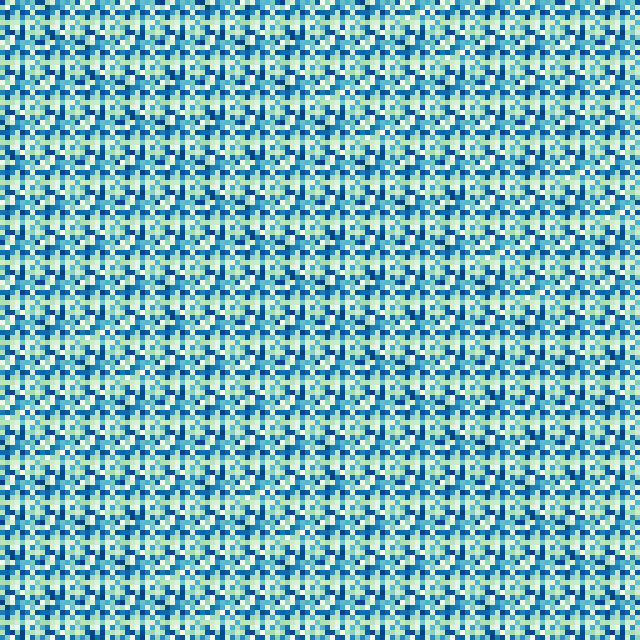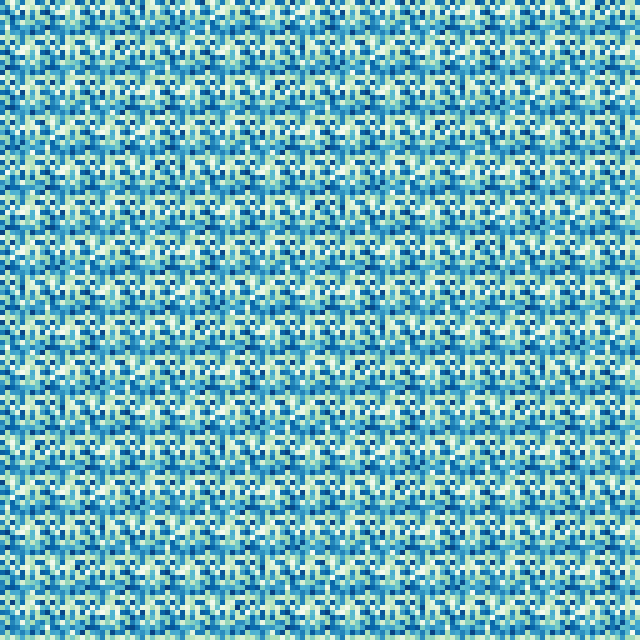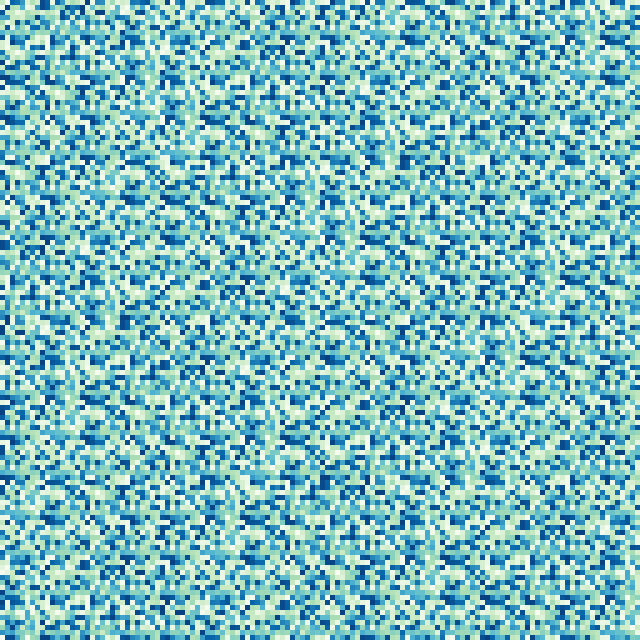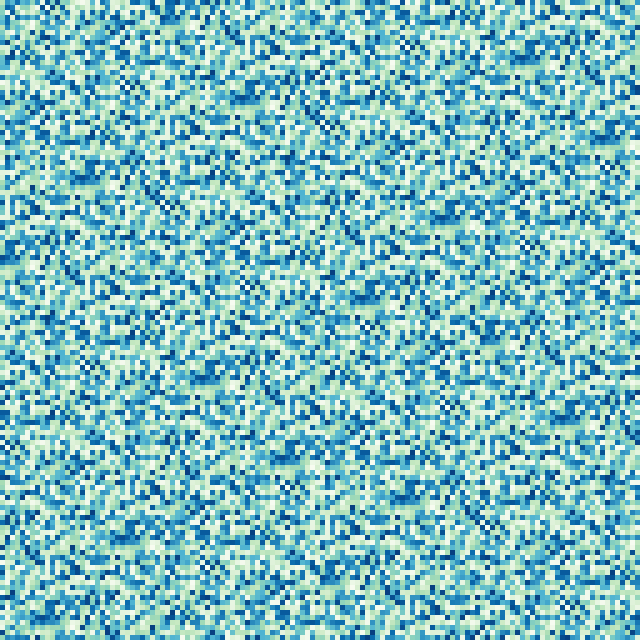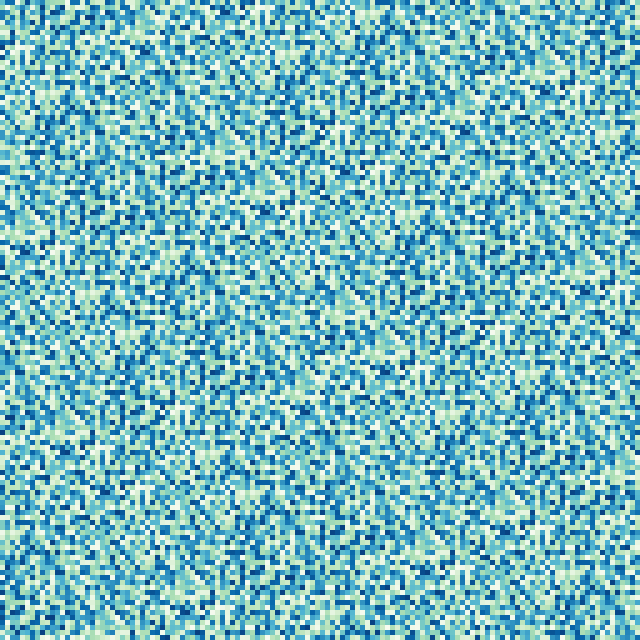AES-128 Diffusion
Gallery
Metadata
I made this originally to be displayed in the Seattle Universal Math Museum, “For the Love of Math!” exhibition curated by Timea Tihanyi, but for reasons I forgot I decided against it and submitted MT19937 instead.
I revisited this today and realised wait hey this is interesting, and made the plots more visually appealing.
What is AES?
So AES is a symmetric-key encryption algorithm. It works by shuffling (unrigorous definition) the plaintext bits around to create the ciphertext. AES-128 is a specific instance of AES that works on $128$ bits of plaintext at a time, in order words, AES-128 has a 128-bit state.
AES is mostly linear in $GF(2)$. It consists of multiple rounds of the following operations:
- Substitute
- Shift
- Mix
- Add round key
In particular, steps 2-4 are linear operations, and can be represented as a matrix. Step 1 (Substitute) however, isn't linear, and cannot be represented as a matrix. Needless to say, the Substitute step is one of the biggest reasons that AES is so hard to break.
What am I plotting?
Each plot represents the “dependencies” of each input bit at each round of AES. The plot for round 0 is the identity matrix, as each bit only depends on itself.
At subsequent rounds, the “dependencies” of each output bit becomes entangled with more and more input bits, resulting in a random plot at the later rounds. This is known as diffusion, and is very important in cryptography.
The Substitute operation is dealt probabilistically, as for a given $n$-th bit, even knowing its value before Substutite, can result in both $0,1$ after Substitute, because this operation is done at the byte level. The Substitute operation is responsible for most of the colour variations of this collection of images.
I also did other stuff that's not as faithful to the original AES-128 such as switching to the field $\mathbb{Z}$ in gen_n_rounds because it gives more visually interesting results. The final plots, however, are still faithful to what I'm trying to visualize.
Code
Sage:
1
2
3
4
5
6
7
8
9
10
11
12
13
14
15
16
17
18
19
20
21
22
23
24
25
26
27
28
29
30
31
32
33
34
35
36
37
38
39
40
41
42
43
44
45
46
47
48
49
50
51
52
53
54
55
56
57
58
59
60
61
62
63
64
65
66
67
68
69
70
71
72
73
74
75
76
77
78
79
80
81
82
83
84
85
86
87
88
89
90
91
92
93
94
95
96
97
98
99
100
101
102
103
104
from sage.all import *
import matplotlib.pyplot as plt
import numpy as np
from PIL import Image
aes = mq.SR(10, 4, 4, 8, star=True, allow_zero_inversions=True)
F = aes.base_ring()
FP = PolynomialRing(F, 'k', 16)
key = FP.gens()
init_state = matrix(FP, [list(key[4*i:4*i+4]) for i in range(4)])
x = F.gens()[0]
def state_nth_bit(n:int):
s = [list(i) for i in aes.state_array()]
nb = n >> 3
s[nb >> 2][nb & 3] = x^(n%8)
return s
def flatten_aes_state(s):
s = [j for i in s for j in list(i)]
s = [i.polynomial().exponents() for i in s]
s = [int(i in j) for j in s for i in range(8)]
return s
def get_mix_mat_GF2():
mats = []
for i in range(16*8):
mats.append(aes.mix_columns(state_nth_bit(i)))
return matrix(ZZ, [flatten_aes_state(m) for m in mats]).T
sbox = aes.sbox()
def get_prob_bit(n:int):
prob = [0]*8
for i in range(0x100):
if (i>>n) & 1 == 0:
continue
sb = sbox[i]
for j in range(8):
if (sb>>j) & 1:
prob[j] += 1
return prob
shuf = list(range(8))
def get_prob_bit(n:int):
prob = [0]*8
prob[shuf[n]] = 1
return prob
def get_sub_mat_GF2():
sub_mat = np.array([get_prob_bit(i) for i in range(8)], dtype=int)
sub_mat = (sub_mat - sub_mat.min()) / (sub_mat.max() - sub_mat.min())
sub_mat = matrix(ZZ, sub_mat.astype(int)).T
return block_diagonal_matrix(*tuple([sub_mat]*16))
shift = matrix(ZZ, aes.shift_rows_matrix())
mix = get_mix_mat_GF2()
sub = get_sub_mat_GF2()
def gen_n_rounds(n:int):
r1 = identity_matrix(ZZ, 128)
for i in range(n):
r1 = sub*r1
r1 = shift*r1
r1 = mix*r1
return r1
n = 3
scale = 5
sz = 128*n*scale
cmap = plt.get_cmap('GnBu')
fimg = np.zeros((sz,sz,4), dtype=np.uint8)
for i in range(n*n):
r1 = gen_n_rounds(i)
y,x = i%n, i//n
r1 = np.array(r1, dtype=float)
r1 = (r1 - r1.min())/(r1.max() - r1.min())
img = np.kron(r1, np.ones((scale,scale)))
img = (cmap(img)*255).astype(np.uint8)
fimg[
128*scale*x:128*scale*(x+1),
128*scale*y:128*scale*(y+1)
] = img
img = Image.fromarray(fimg)
img.save("dist/aes128-diffusion-9r-mod128.png")
for i in range(11):
r1 = gen_n_rounds(i)
r1 = np.array(r1, dtype=float)
r1 = (r1 - r1.min())/(r1.max() - r1.min())
img = np.kron(r1, np.ones((scale,scale)))
img = (cmap(img)*255).astype(np.uint8)
Image.fromarray(img).save(f"dist/aes128-diffusion-9r-mod128-{i}.png")




